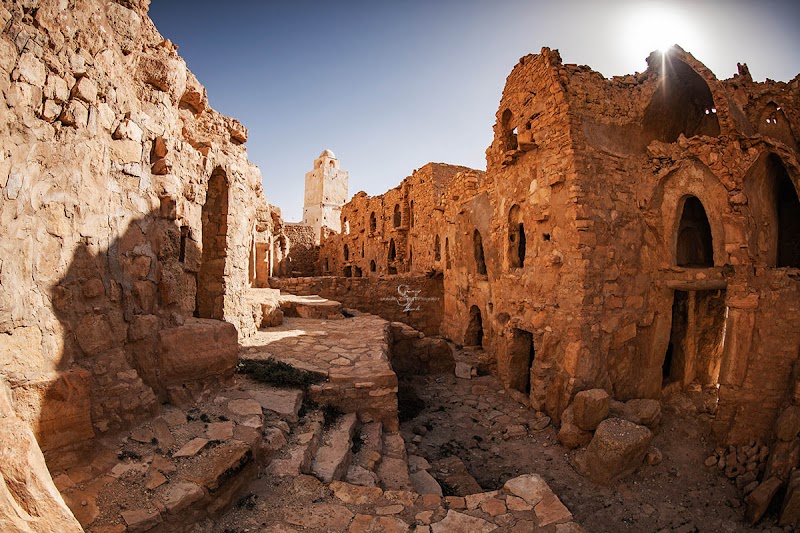Exploring the Timeless Berber Granaries and Troglodyte Villages of Tataouine, Tunisia
The ancient Berber granaries and troglodyte villages near Tataouine offer an unforgettable journey into a hard, yet resilient landscape. Discover the stone fortresses and cave homes shaped by centuries of desert life while navigating trails that challenge and inspire in equal measure.
Start Early to Beat the Heat
Begin your hike before 9 AM to avoid harsh sunlight and rising temperatures common in this desert environment.
Wear Durable Footwear
Choose shoes with strong ankle support and non-slip soles; the rocky, uneven paths demand reliable traction and stability.
Carry Plenty of Water
The dry air and exposed trails quickly drain your body’s reserves—bring at least 2 liters, more if hiking in summer months.
Hire a Local Guide
Local guides can navigate the less obvious paths and share the rich history behind the granaries and troglodyte dwellings.
Exploring the Timeless Berber Granaries and Troglodyte Villages of Tataouine, Tunisia
In the sunbaked expanse of southern Tunisia, the ancient Berber granaries and troglodyte villages around Tataouine offer a rugged encounter with history etched directly into the earth. This landscape, fierce and unyielding, challenges visitors with rocky trails that snake through canyon walls and arid plains. Here, the granaries—known locally as ksour—stand as formidable stone vaults where generations safeguarded grain against the desert’s reach. Their rounded towers, clinging to jagged hillsides, seem to watch the horizon with a silent patience.
To explore these sites, brace yourself for a trek of roughly 8 to 12 kilometers, depending on the chosen route. Elevation changes are moderate, ranging up to 300 meters, but the rocky terrain demands steady footing and attention. Footpaths often wind through shadowed crevices carved in volcanic rock, where ancient troglodyte homes—dwellings dug into the earth itself—offer shelter that feels intensely close to the land. This is not a stroll in a manicured park but an active engagement with a landscape fiercely itself.
Timing your visit early in the day not only helps avoid the midday heat but allows shadows to animate the sculpted forms of caves and granaries. The dry air is a constant companion, daring you to stay hydrated and wear sturdy, supportive shoes with good grip. Local guides offer invaluable insights into the villages’ social and architectural history, making it easier to grasp how the Berber people thrived here.
These granaries, with their layered construction—stone, mud, and wood—reflect a practical ingenuity shaped around environmental challenges. The nearby troglodyte homes, often partially hidden in cliff faces, reveal a lifestyle that conciliates with the harshness outside. Wild fig trees and scrub brush cling stubbornly to crevices, seeming to hold the hills together as the wind whistles through narrow valleys.
For adventurers ready to respect the raw terrain, exploring Tataouine’s granaries and troglodyte villages offers a blend of immersive cultural history and physical challenge. The trails push forward through exposures to open sun and sudden shade, inviting you to adopt the rhythm of the land itself. By preparing for shifts in temperature and rough footing, and embracing local knowledge, visitors can engage deeply with one of North Africa’s most striking and enduring heritage sites.
Nearby Trips
All Adventures
Boat Charters
Water Activities
Adventures near Tataouine
Discover the unique and memorable adventures that make Tataouine special.
Frequently Asked Questions
How do I get to the Berber granaries from Tataouine?
Most visitors reach the granaries by car or tour from Tataouine town. Roads are generally passable with regular vehicles, but a local guide is recommended to find hidden paths and safely explore the troglodyte caves.
Is it safe to hike alone in this region?
While the area is relatively safe, the rocky terrain and remote locations suggest hiking with a guide or a companion for navigation assistance and emergencies.
What should I expect from the trails in terms of wildlife?
You may encounter desert-adapted birds, reptiles like lizards, and the occasional fox. Wildlife tends to be elusive but adds to the immersive desert experience.
Are there any facilities or shops near the granaries?
Facilities are very limited near the granaries themselves. Stock up on water and snacks in Tataouine before heading out, and plan accordingly.
Can you enter the troglodyte homes?
Some troglodyte caves remain accessible, but many are fragile or privately owned. Respect signs and local guidelines to avoid disturbing these historical dwellings.
What languages do local guides speak?
Many local guides speak Arabic and French, with some fluent in English. It's best to arrange guides through reputable operators in Tataouine.
Recommended Gear
Hiking Boots
Essential for navigating rocky and uneven granary trails and troglodyte village paths safely.
Wide-brimmed Hat
Protects from intense sun exposure during the hottest parts of the day.
Hydration Pack or Water Bottles
Keeping water readily available is critical across all seasons in this dry landscape.
Lightweight Layered Clothing
Helps manage temperature shifts from warm days to cool nights around the granaries.
Local Insights
Hidden Gems
- "The overlook near Chenini offers sweeping views that reveal the pattern of scattered granaries across the desert hills."
- "A secluded troglodyte village near Douiret preserves original furnishings and ancient irrigation channels."
Wildlife
- "Watch for Barbary ground squirrels darting among rocks and various desert birds like the desert lark and hoopoe."
History
"These granaries are living relics of Berber ingenuity, built to store grain securely against raids and spoilage in a harsh desert climate."

